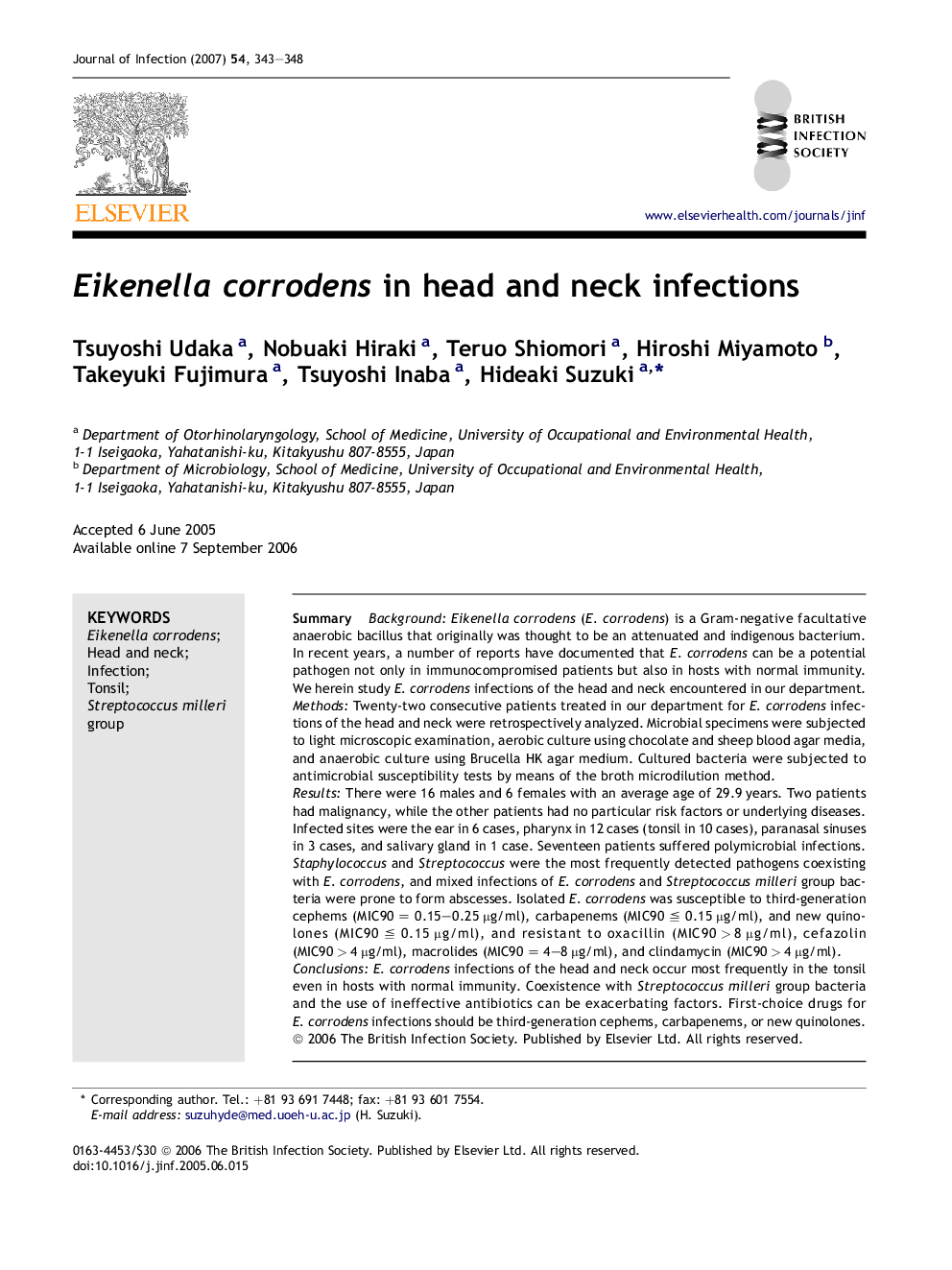| کد مقاله | کد نشریه | سال انتشار | مقاله انگلیسی | نسخه تمام متن |
|---|---|---|---|---|
| 3376044 | 1219706 | 2007 | 6 صفحه PDF | دانلود رایگان |

SummaryBackgroundEikenella corrodens (E. corrodens) is a Gram-negative facultative anaerobic bacillus that originally was thought to be an attenuated and indigenous bacterium. In recent years, a number of reports have documented that E. corrodens can be a potential pathogen not only in immunocompromised patients but also in hosts with normal immunity. We herein study E. corrodens infections of the head and neck encountered in our department.MethodsTwenty-two consecutive patients treated in our department for E. corrodens infections of the head and neck were retrospectively analyzed. Microbial specimens were subjected to light microscopic examination, aerobic culture using chocolate and sheep blood agar media, and anaerobic culture using Brucella HK agar medium. Cultured bacteria were subjected to antimicrobial susceptibility tests by means of the broth microdilution method.ResultsThere were 16 males and 6 females with an average age of 29.9 years. Two patients had malignancy, while the other patients had no particular risk factors or underlying diseases. Infected sites were the ear in 6 cases, pharynx in 12 cases (tonsil in 10 cases), paranasal sinuses in 3 cases, and salivary gland in 1 case. Seventeen patients suffered polymicrobial infections. Staphylococcus and Streptococcus were the most frequently detected pathogens coexisting with E. corrodens, and mixed infections of E. corrodens and Streptococcus milleri group bacteria were prone to form abscesses. Isolated E. corrodens was susceptible to third-generation cephems (MIC90 = 0.15–0.25 μg/ml), carbapenems (MIC90 ≦ 0.15 μg/ml), and new quinolones (MIC90 ≦ 0.15 μg/ml), and resistant to oxacillin (MIC90 > 8 μg/ml), cefazolin (MIC90 > 4 μg/ml), macrolides (MIC90 = 4–8 μg/ml), and clindamycin (MIC90 > 4 μg/ml).ConclusionsE. corrodens infections of the head and neck occur most frequently in the tonsil even in hosts with normal immunity. Coexistence with Streptococcus milleri group bacteria and the use of ineffective antibiotics can be exacerbating factors. First-choice drugs for E. corrodens infections should be third-generation cephems, carbapenems, or new quinolones.
Journal: Journal of Infection - Volume 54, Issue 4, April 2007, Pages 343–348